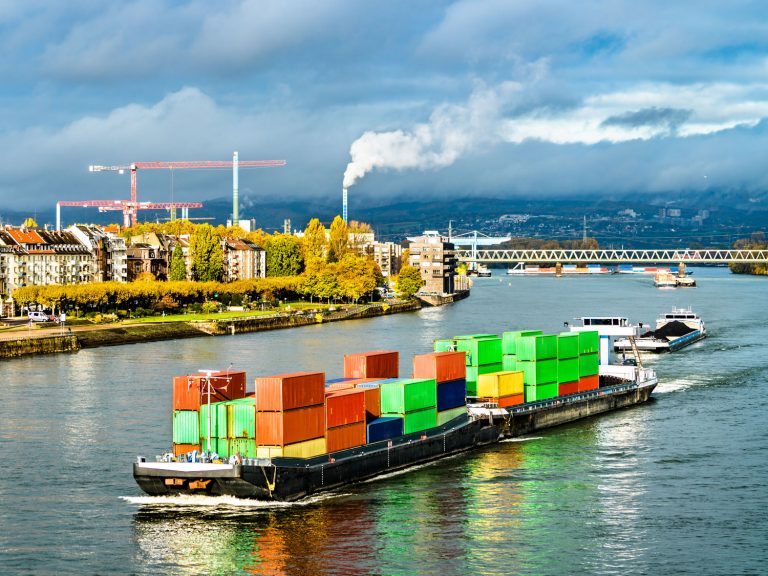
Date:
Rhine closure to container barge traffic will have far reaching consequences
Europe’s heatwave forced the closure of the Rhine to barge traffic from last Friday as water levels fell 4cm below the depth necessary for operations, raising fears for container shipping and industrial disruption.
The Rhine, the second-largest river in central and western Europe, runs 760 miles from the Swiss Alps to the North Sea, with significant container volumes moving between Rotterdam, Antwerp, Germany and Poland.
The depth of the Rhine was down to 49cm on 7th August at the gauge tower at Kaub, a bottleneck widely considered to be the most important point for navigators assessing depth. At 41cm the river becomes all but impassable and the river dropped to 37cm on 13th August.
Levels at the Kaub chokepoint are lower than they were at the same point in 2018 ahead of that October’s historic low of 25cm. The water was so low the river was closed to ship traffic for weeks, forcing companies to switch freight to railways and roads.
Millions of tonnes of containers and conventional cargoes are shipped on the Rhine and any drop in capacity will hit industrial production. Similar drought conditions in 2018 saw production drop by 1.5%.
Operators have been running services at 20% capacity (which has already generated a containerbacklog) to reduce the depth they require, but with water levels dropping a further 5cm over the weekend, they have had to discontinue navigation on the Upper and Middle Rhine.
The river’s closure has come at an already challenging time for European supply chains, which are dealing with continuing port congestion, the repercussions of the war in Ukraine and increasing industrial unrest.
The most unfortunate shippers will be wondering how they can retrieve containers already out on barges when the closure was announced and get them to the nearest terminals for unloading.
Barge operators say they will position vessels to safely unload containers at terminals and move overland between the terminals on the Upper, Middle and Lower Rhine, although this is not assured, as there are fears that water levels could fall well below 27cm record and switching from barge to rail brings a premium, which can be substantially more to move goods by road.
Please read the attached link to Loadstar with an informative article from last week in the prominent trade press that provides further details – https://theloadstar.com/rhine-closure-imminent-as-low-water-hobbles-freight-movement-by-barge/
The UK and Europe’s supply chains are being hit with many unimaginable challenges over recent months that will continue in 2022 and 2023. Metro will always be at the front of the industry and leading innovation and initiatives to ensure that we work around issues and deliver the best available and competitive solutions within any environment regardless of the reason for the disruption.
The impact of the Rhine’s closure to barges will not directly impact many of our customers, but the knock-on impact to continental container ports could be profound and may impact traffic diverted from Felixstowe, in light of next week’s strike.
We are closely monitoring the situation in Germany and other affected countries and how it extends to European ports, because delays and congestion there may impact the repatriation of cargo and UK vessel calls, with extended overall transit time.
For further advice and updates, please call your Metro team. We will provide the latest information and options, to ensure your product is delivered to the right place at the right time, competitively. It’s what we do.
